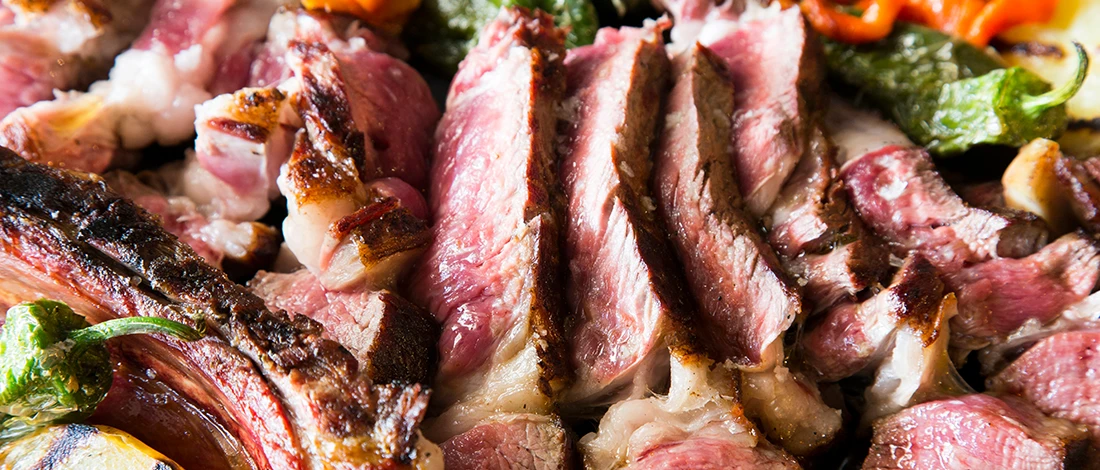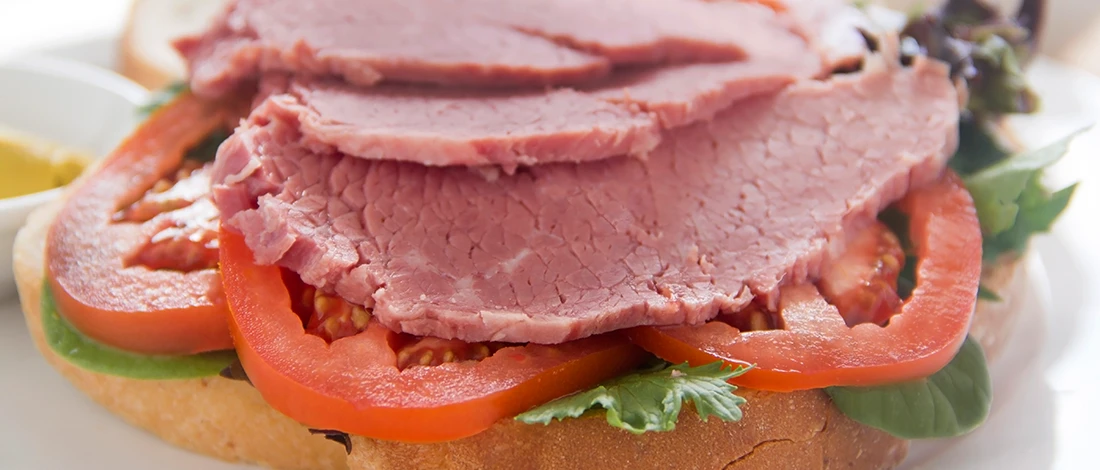As a carnivore diet follower, I've only eaten beef and white meat as my only protein source. I recently stumbled upon a carnivore article stating that veal is nutritionally better than beef.
Out of curiosity, I researched extensively, spending over 20 hours reading articles and consulting with expert nutritionists to compare veal and beef meats.
Here is what I discovered.
Quick Summary
- Veal is the meat of young cattle and is softer and lighter in color than beef, which comes from mature cows and has a stronger taste and darker color.
- Veal and beef differ in texture, taste, color, and price, with veal being more expensive due to the value-added process during production.
- In terms of nutrition, veal has a higher vitamin content and less fat, but beef contains more protein and is lower in cholesterol.
- If you need a reliable, high-quality beef or veal supplier, check out our review of ButcherBox, which is a wonderful place to start.
What Is Veal?

Veal is a lean meat of young cattle. The term veal refers to the age of a cow rather than its gender or breed.
Veal is classified into five categories according to its age.
- Bob veal is the flesh from calves less than a month old.
- Formula-fed veal, also known as milk-fed veal, is the flesh of calves aged 18 to 20 weeks. These meats are white to cream in color and have a firm, delicate velvety texture.
- Non-formula-fed veal, also known as red veal or grain-fed veal, is the meat from calves aged 22 to 26 weeks and is deeper in color [1].
- Rose veal is made from 35-week-old calves, and the meat is pink.
- Free-grown veal is derived from calves reared on the pasture and butchered at roughly 24 weeks.
These veal meat varieties are soft in texture and renowned in culinary applications, particularly in French and Italian cuisines.
"Because veal meat is so soft, grilling it is preferable. Braising would degrade its suppleness and muddle its tastes."
- Michael White, Executive Chef
What Is Beef?
Beef is a culinary term for adult cattle or any bovine meat. This meat is derived from both bulls and cows and is often red in color and firm in texture.
Because beef is tough meat, it is aged in various ways (wet or dry aging) to produce additional softness and delicate flavor [2].
There are three types of beef cuts for various cooking purposes:
- Steak
- Roast
- Short ribs
Additional beef-related products include burgers, beef suet, and sausages, which combine the meat with other ingredients.
Beef meat also includes all the edible internal organs of the animal, like the liver, brain, pancreas, and intestines.
Aside from that, some people utilize the blood of these butchered animals to make various meals such as biroldo, black pudding, and blood tongue.
Also Read: What Is Ancho Beef?
Veal vs. Beef Key Differences
Here are the key differences between veal and beef in terms of taste, texture, and color.
1. Source
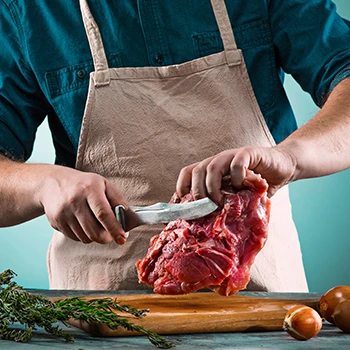
The primary distinction between veal and beef is that they are commonly sourced from different sorts of cows. Veal, for example, is derived from butchered dairy calves, whereas beef is derived solely from beef cows.
The distinction is that dairy cows are raised to produce milk; thus, they are slimmer. Conversely, in the dairy breed, males aren't useful for dairy production and will be butchered at a relatively young age to produce veal.
Meanwhile, beef cattle are raised exclusively for beef production. As a result, they are frequently stockier and wider than dairy cattle. Furthermore, beef meat is produced from older animals that have attained maturity, unlike veal.
Generally, a veal carcass is smaller, lightweight, and has less fat content than a beef carcass. This also affects the overall amount of meat harvested from the animal.
2. Texture
Veal is fine-grained and less firm, with a velvety or tender texture. It is also a more tender meat than beef since the muscles are under-utilized. Veal meat is also less difficult to digest because the flesh is not as thick and has a low-fat content.
On the other hand, beef has a solid, thick, and dry texture. This is because the muscle fibers are densely packed and homogeneous.
3. Taste
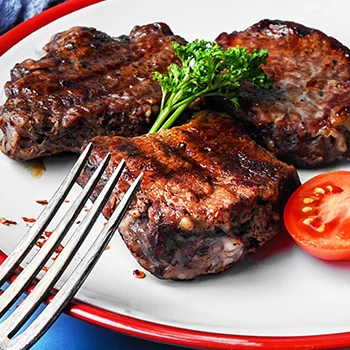
The tastes of veal and beef are entirely different.
Veal is milder in flavor since it is derived from young calves, while beef has a strong taste that can stand on its own in different meals.
Because veal is from animals whose muscles haven't fully grown until maturity, the meat has a more melt-in-your-mouth flavor/taste than beef. However, note that if you do not spice it up correctly when cooking, veal can yield a neutral taste.
Compared to the bland-tasting veal, beef has delicate aromas that explode on your tongue, generating rich umami. I love beef because it's more of a flavorful feast that mixes both fatty and meaty flavors.
Veal also lacks the fatty flavor attached to most meats because of its relatively low marbling degree.
I recommend pairing veal and beef with carbohydrate-rich foods like rice, pasta, or potatoes for a hearty and filling dish.
4. Color
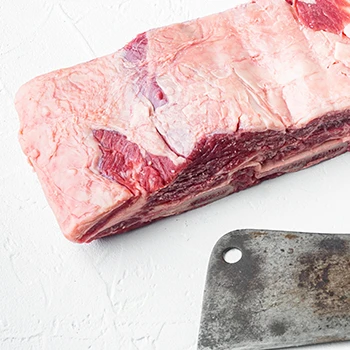
Veal is lighter in color than beef meat due to the calf's age and the amount of iron in its muscles.
However, not all veal is light. It's important to note that because iron is incorporated into the calves' diet, free-range calves have a deeper red hue and are tougher because they are permitted to roam freely- exercising the muscles.
Beef, on the other hand, has a striking dark color.
When beef is fresh and not exposed to air (as in a vacuum-sealed packet), it has a purple-red hue due to myoglobin, the primary pigment responsible for meat color.
When exposed to air, myoglobin produces the pigment oxymyoglobin, which gives the meat an attractive cherry-red hue [3].
5. Price Point
Veal is often more costly per pound than older beef meat. This is because veal production is essentially a value-addition process for young dairy bull calves.
And because they're a dairy breed, there's the Whey solids byproduct from the animal used to manufacture cheese as well.
Related Articles:
Veal vs. Beef Nutritional Comparison

According to the USDA, here's a nutritional breakdown between beef and veal [4].
1. Calories
Both types of meat are heavy in calories, but beef is substantially more. 85 grams of beef has 213 calories, while one hundred grams of veal has 146 calories.
2. Fat

Beef and veal have different fat contents. There are 12 grams of total fat and just 4.5 grams of saturated fat in a 3-ounce (84 grams) portion of rib roast veal.
Note that the total fat accounts for 18% of the DV. Round-tip roast beef of the same serving size has 10 grams of total fat, and 3.5 grams saturated fat of fat.
When comparing cholesterol levels, beef also has less cholesterol, with a 3- ounce serving containing 70 grams, while veal has 130 milligrams of cholesterol or 43 % of the daily value.
If you're on a weight loss journey, I recommend eating more beef instead of veal meat to keep your cholesterol in check.
3. Protein
Beef contains slightly more protein than veal, but veal has much more of all necessary amino acids. As a result, the protein quality of veal is better.
A 100 grams serving of beef has 26 grams of protein, while a veal of the same serving has about 24.4 grams [5].
Beef and veal, like other meats, have 0 grams of carbohydrate content.
4. Vitamins

Between the two cuts, veal has a far higher vitamin content. In particular vitamins B1, B2, B3, B5, and B9. Veal also has much more vitamin E than beef.
Veal, however, is devoid of vitamin A, whereas beef is relatively rich in it. Additionally, compared to veal, beef has more than twice the amount of vitamin B12 than veal has.
However, I found some noteworthy similarities, such as the absence of vitamin C and D in both.
They also both have the same levels of vitamins B6 and K.
5. Minerals
Veal and beef are packed in minerals in different amounts per 100-gram serving size, such as:
- Vitamins B12: Red meat is high in vitamin B12, which is essential for DNA repair and nerve cell nourishment [6]. Veal has 1.3 micrograms compared to 2.6 micrograms in beef.
- Thiamin: These levels in both types of meat are slightly comparable, as veal has 0.07 milligrams and beef has 0.46 milligrams.
- Riboflavin: These levels in veal are 0.27 milligrams, whereas, in beef, riboflavin levels are 0.176 milligrams.
- Niacin: With 8.03 milligrams, veal contains roughly 45 percent of the DV for niacin. The equivalent 100-gram serving of beef has 5.38 milligrams of niacin.
Beef is significantly higher in iron, zinc, and selenium when compared to veal. Beef is also a little lower in sodium.
On the other hand, veal contains more significant amounts of copper, magnesium, manganese, choline, and phosphorus.
Veal and beef contain nearly the same amounts of calcium and potassium.
Also Read: Best Carnivore Diet Supplements
FAQs
Does Veal Taste the Same as Beef?
Veal doesn't taste the same as beef. It's more tender because of the undeveloped muscles.
Is Veal the Healthiest Meat?
No, veal isn't the healthiest meat, but it does have reasonable amounts of protein and iron per serving.
Is Veal More Expensive Than Beef?
Yes, veal is more expensive than beef because of extra value added during veal production.
At What Age Does Veal Become Beef?
Veal becomes beef at the age of 6-7 months.
References:
- https://www.fsis.usda.gov/food-safety/safe-food-handling-and-preparation/meat/veal-farm-table
- https://janimscitechnol.biomedcentral.com/articles/10.1186/s40781-016-0101-9#ref-CR7
- https://www.sciencedirect.com/science/article/abs/pii/S2214799321000345
- https://fdc.nal.usda.gov/fdc-app.html#/food-details/174032/nutrients
- https://fdc.nal.usda.gov/fdc-app.html#/food-details/175291/nutrients
- https://ods.od.nih.gov/factsheets/VitaminB12-Consumer/#




